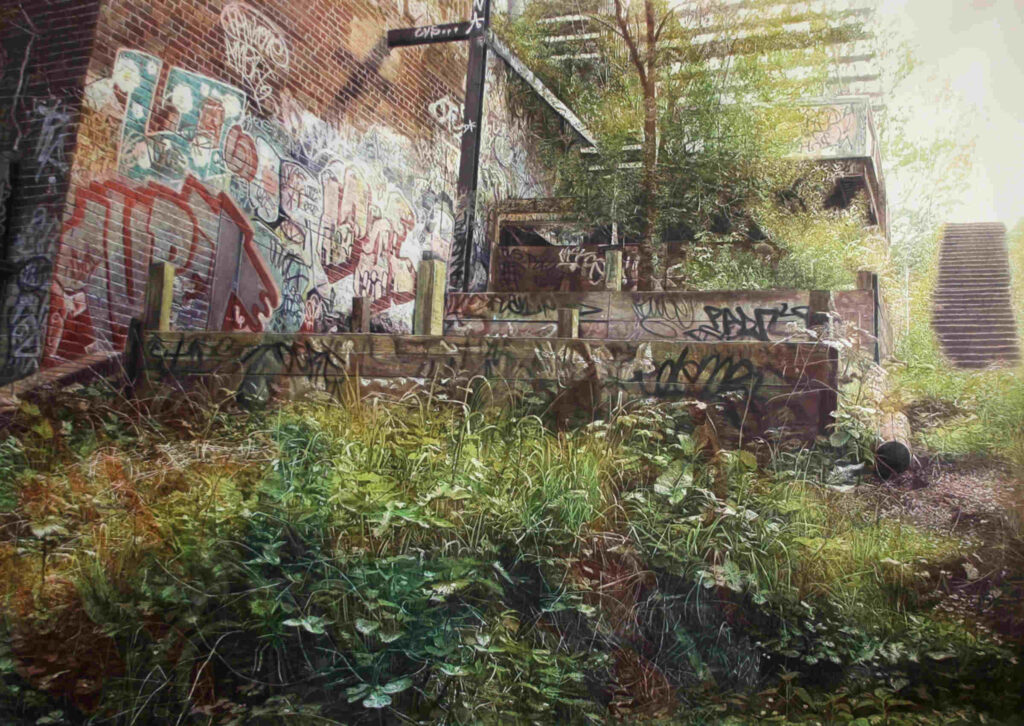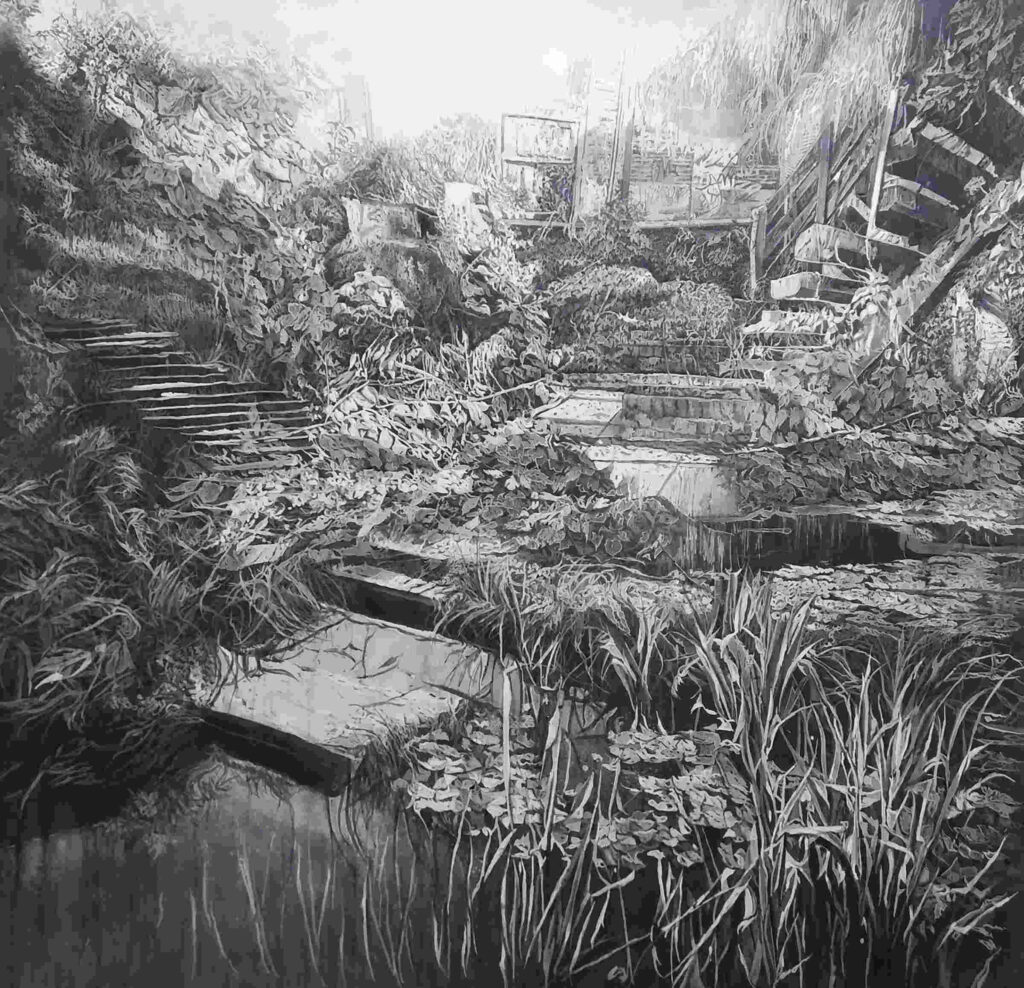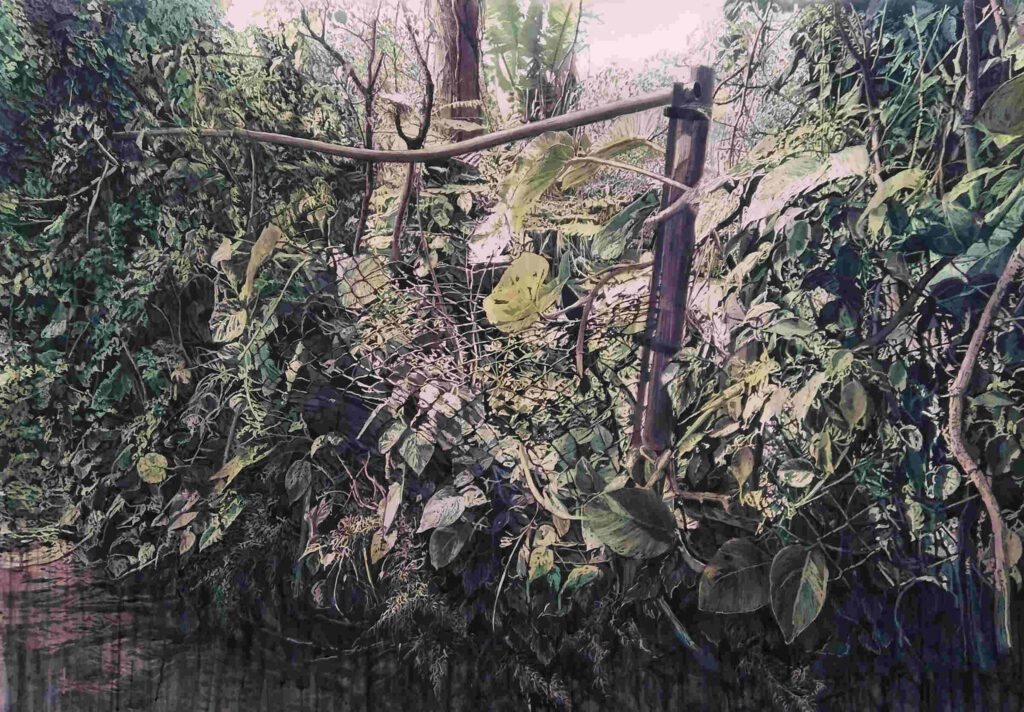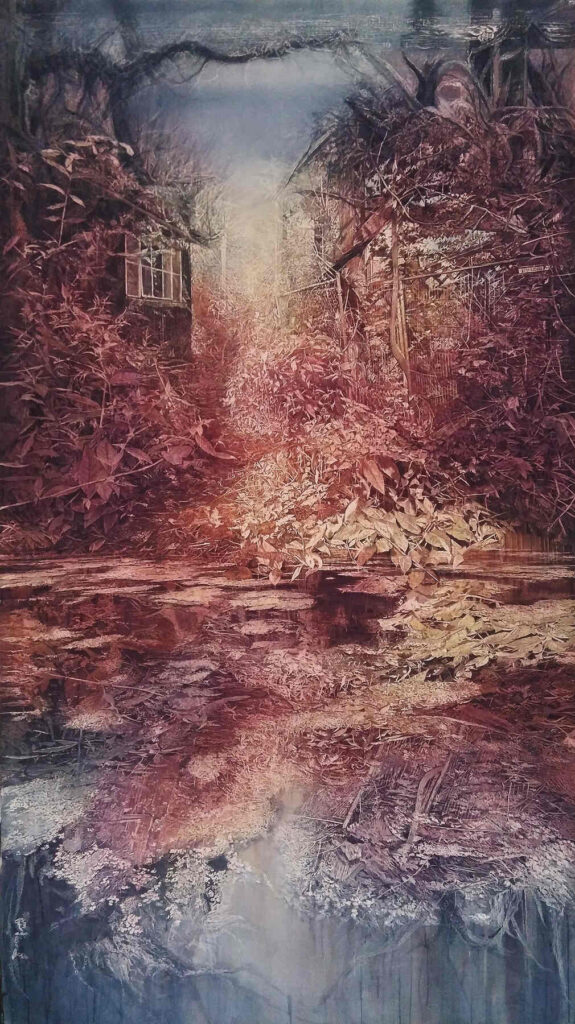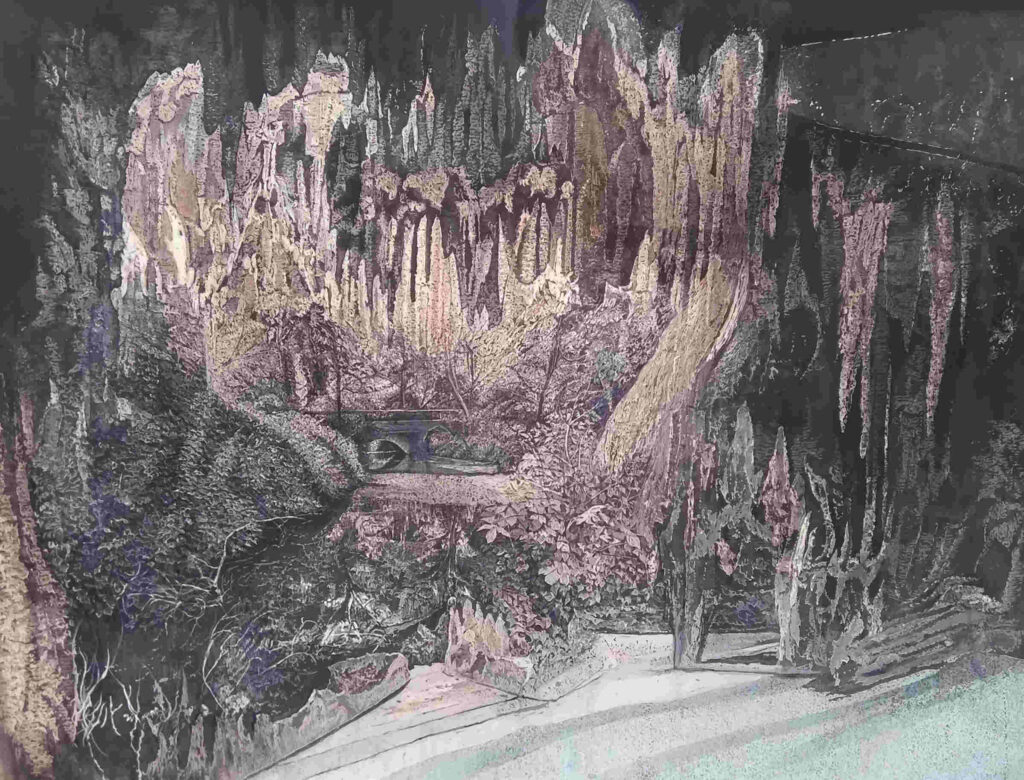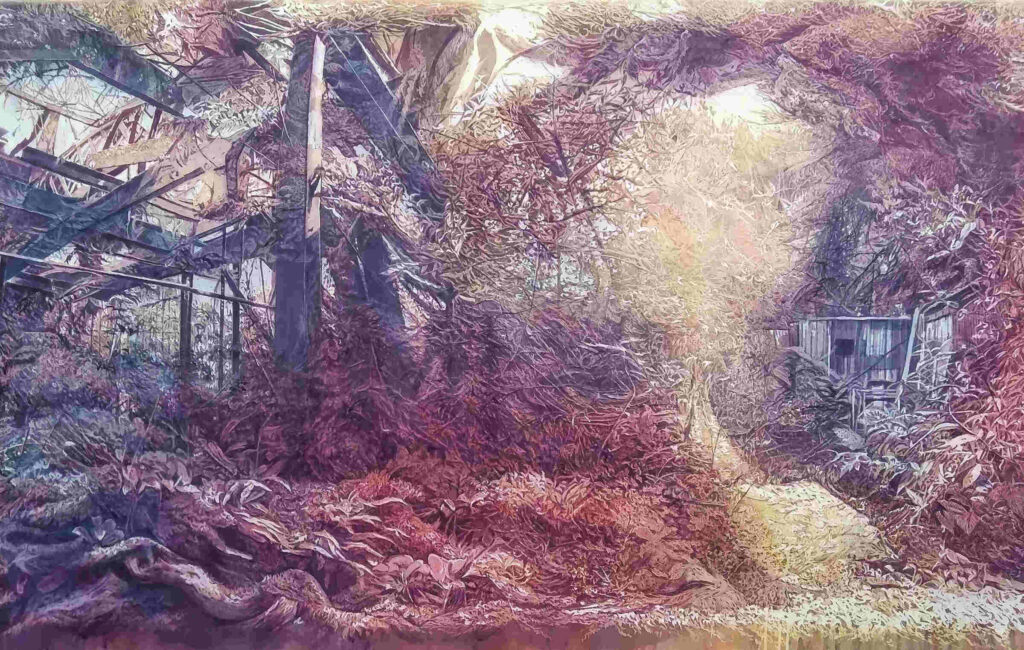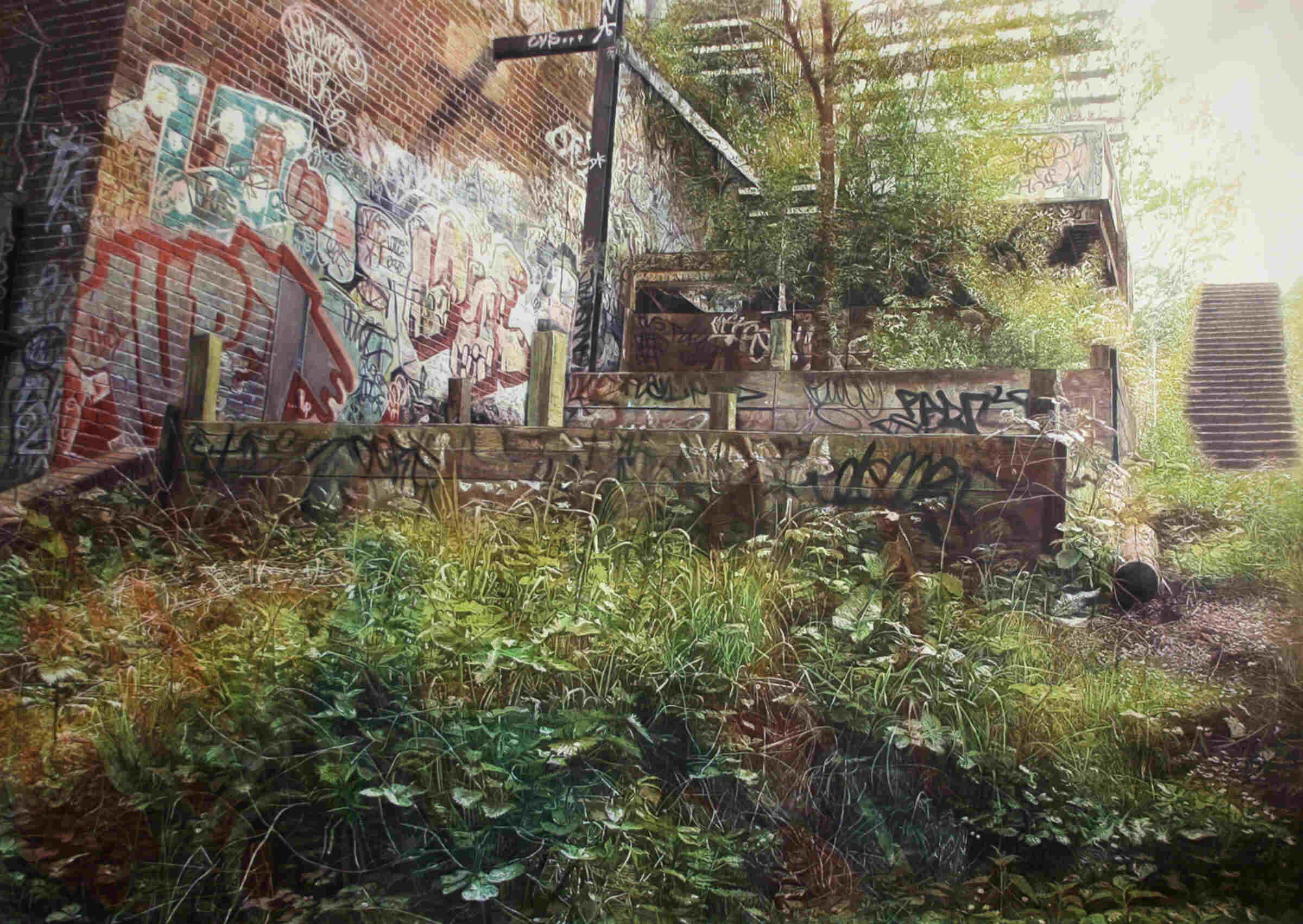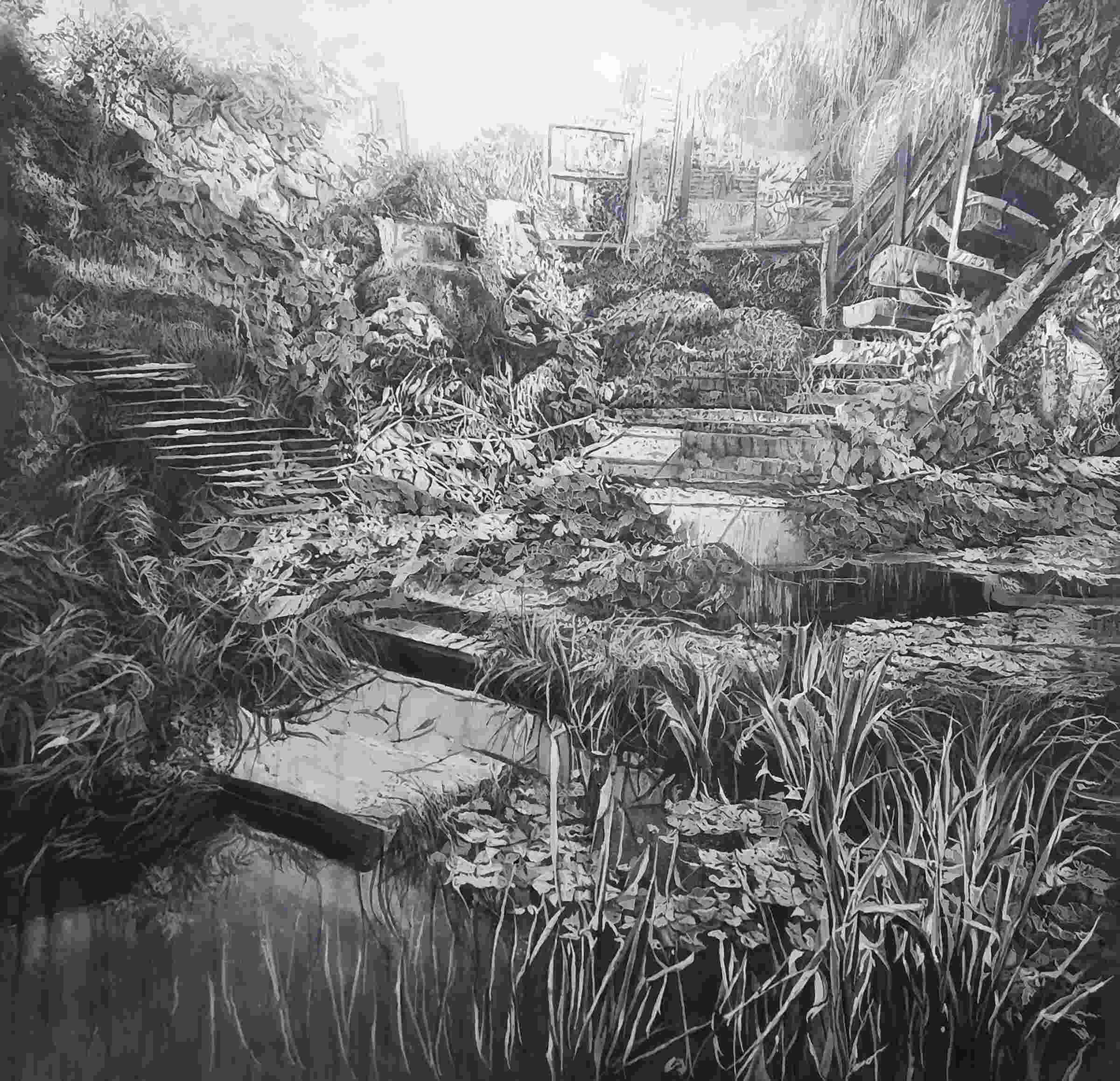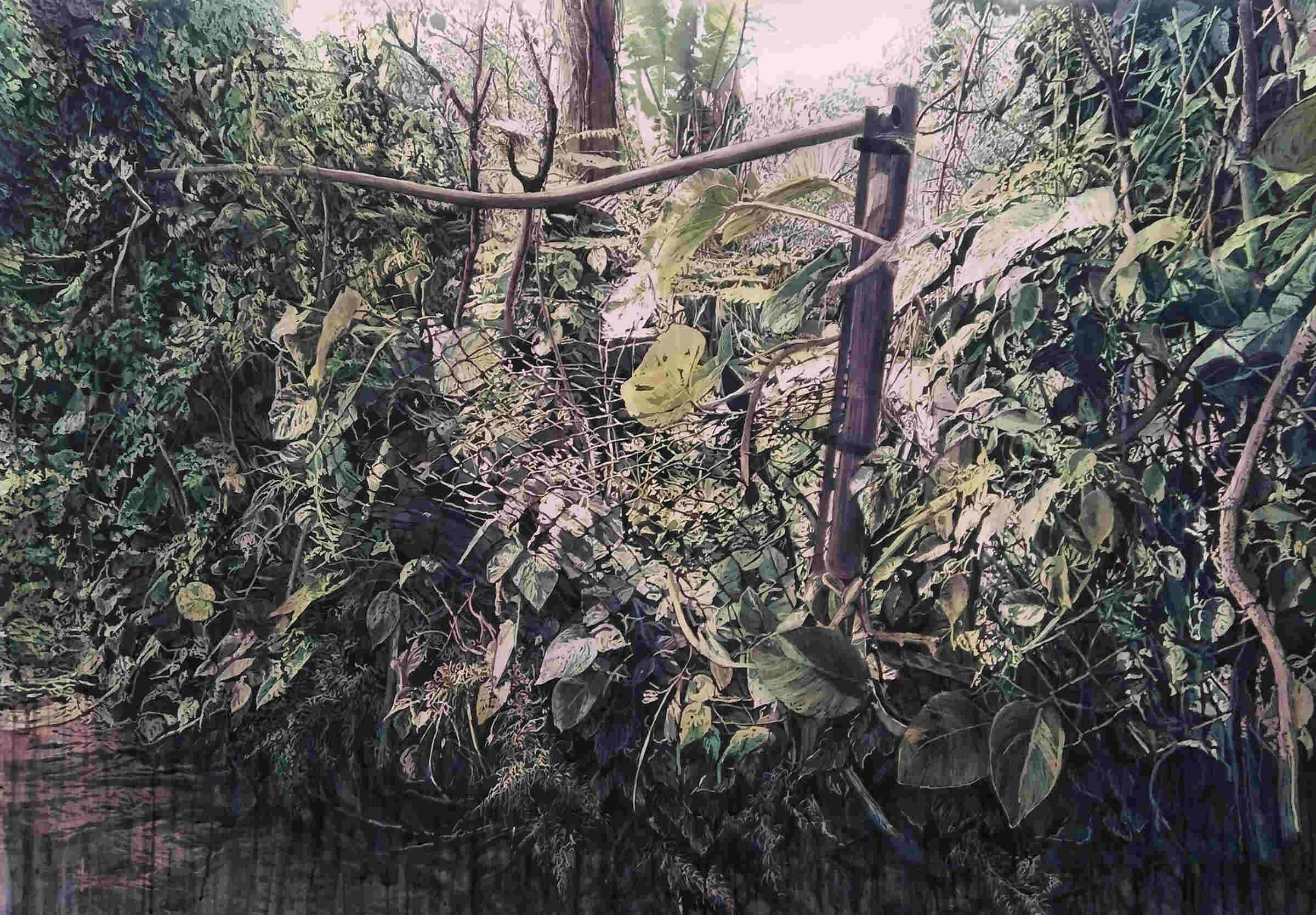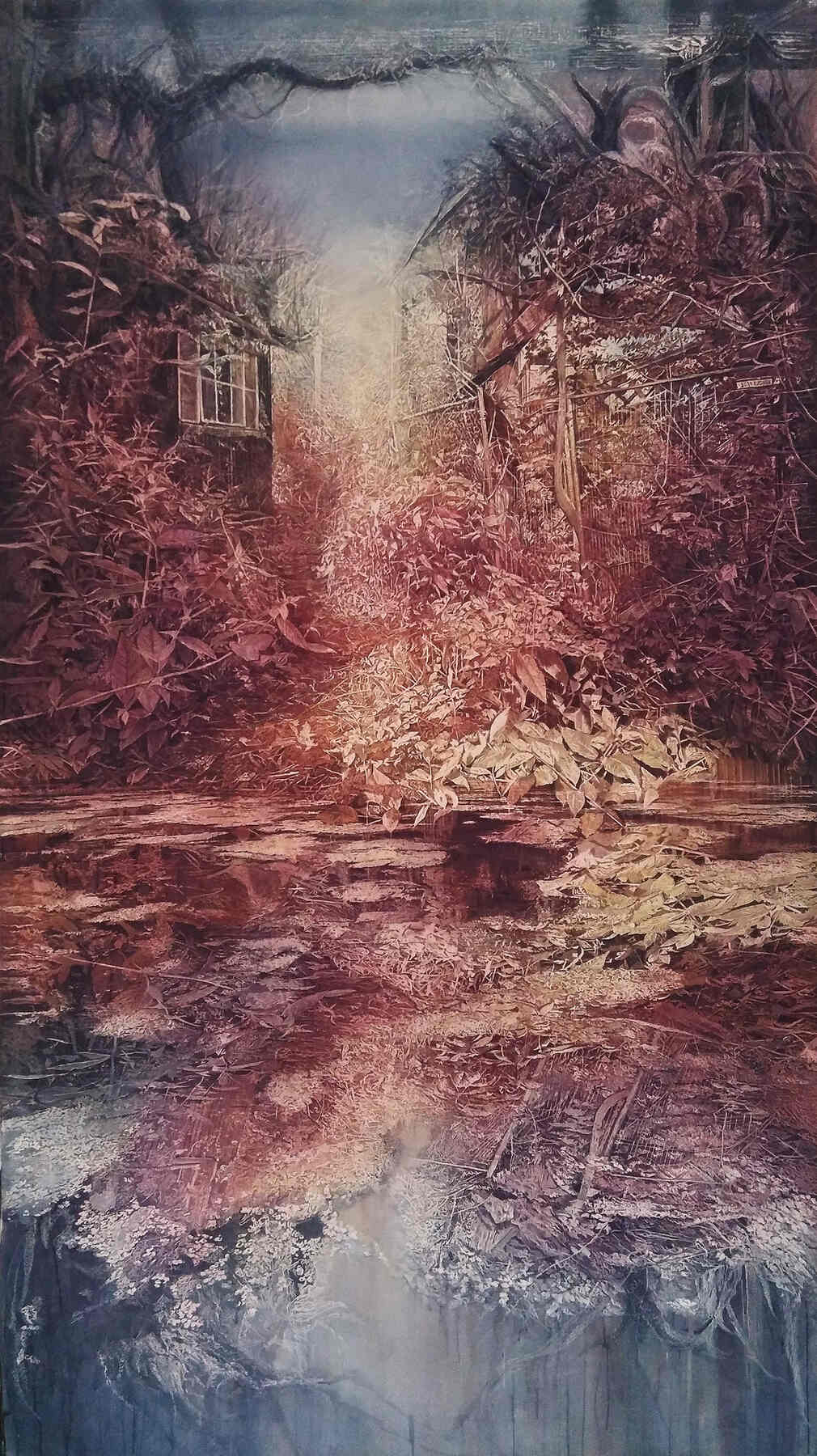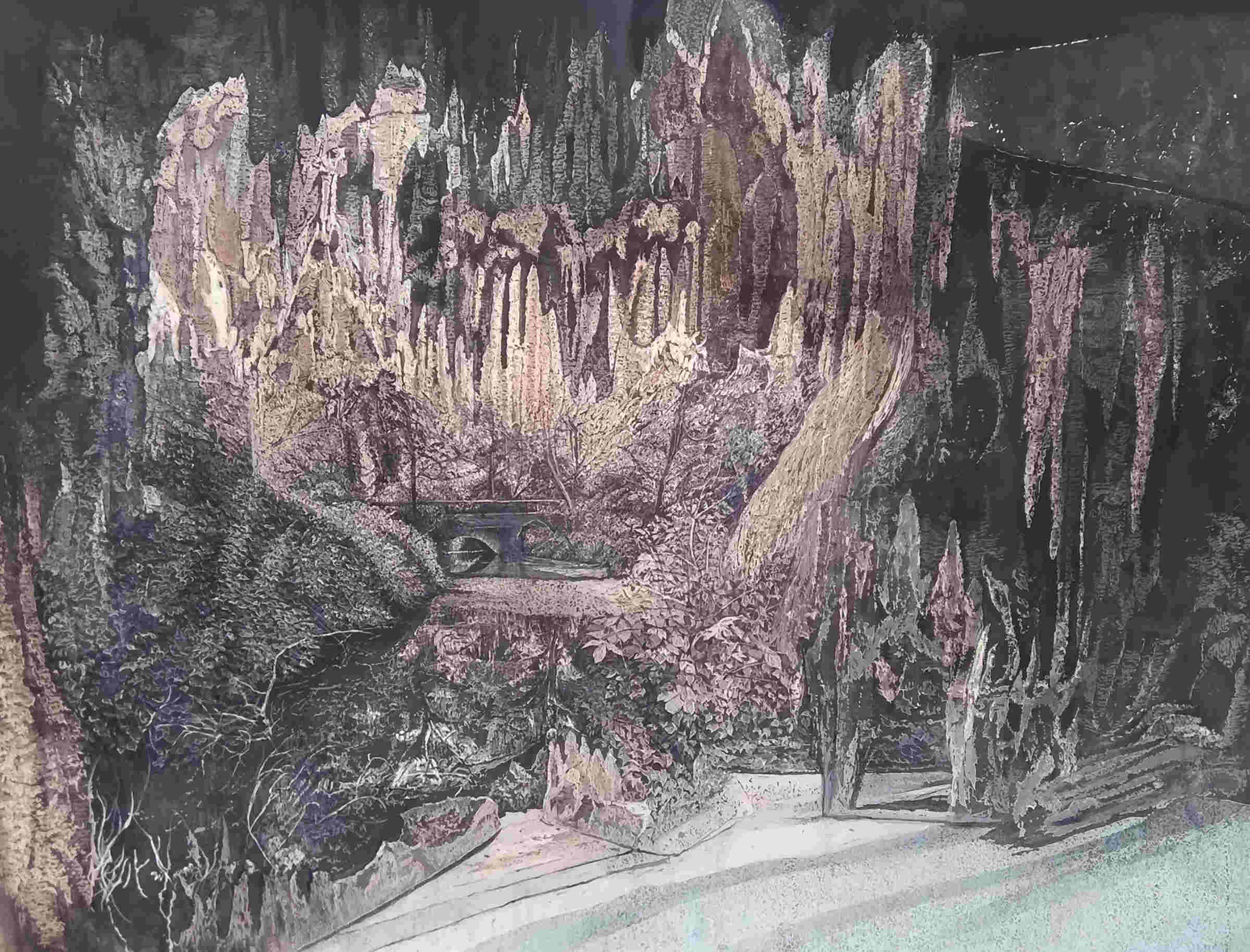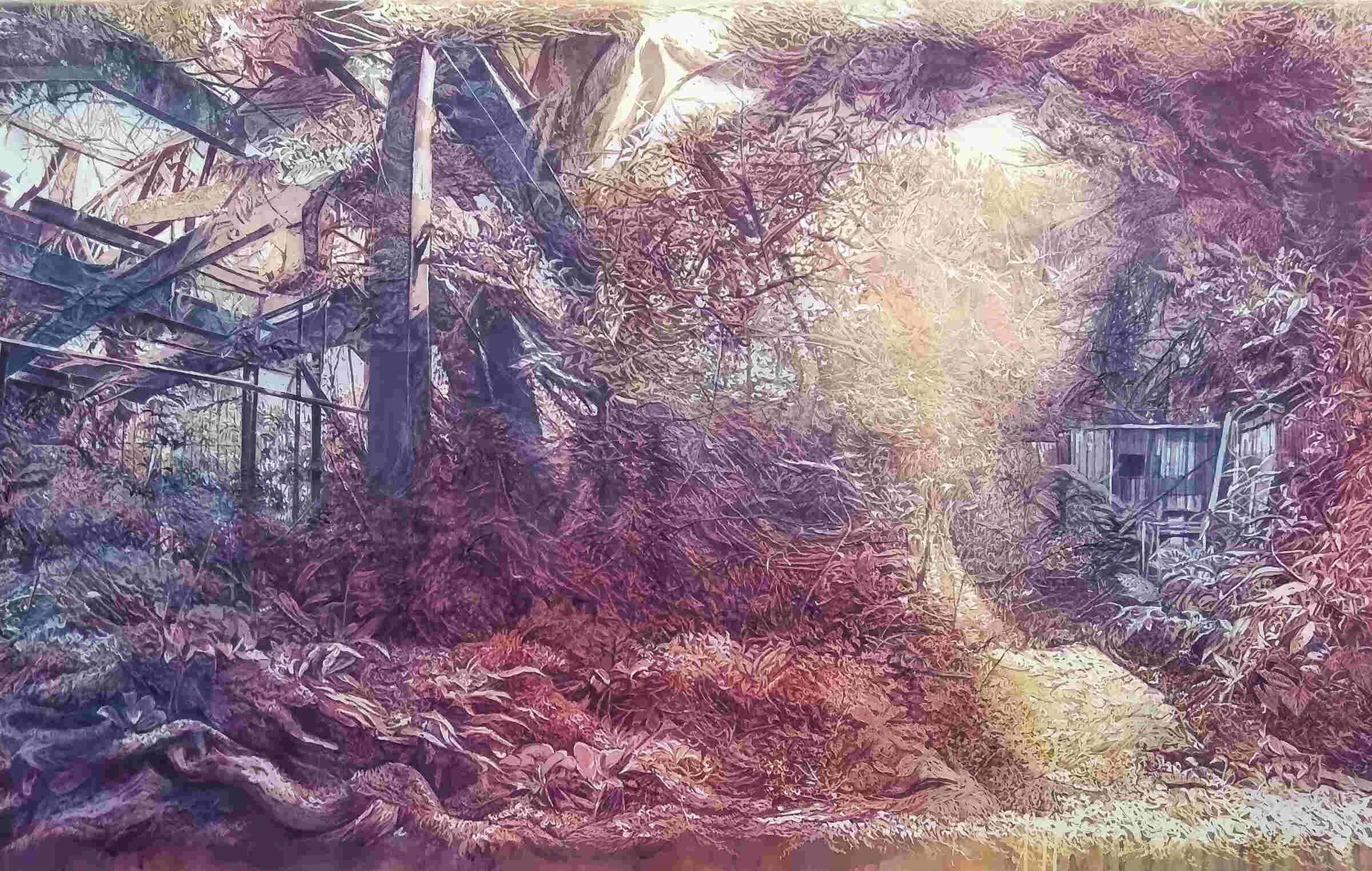Juliette Losq
Juliette Losq’s paintings depict civilisation dissolving slowly back into nature. Her scenes present the industrial outskirts of urban environments that have been abandoned and gradually find themselves rewilded. In creating her compositions Juliette constructs physical models like miniature theatres or dioramas, with layers of paper suggesting both the accretion of time and the creep of the undergrowth. Though based on real places, these landscapes become fictional through their fabrication. Through the process of reconstruction and reinterpretation, Losq aims to preserve the ephemerality of the sites, whilst developing an understanding of the painted landscape as a partially observed, partially imagined construct that can transport us conceptually from one place to another. Alluding to the Picturesque and the Gothic of the eighteenth and nineteenth centuries, Losq interweaves their motifs and devices with the marginal areas that she depicts, aiming to evoke an ambiguous world in which beauty and neglect are interchangeable.
Biography
Juliette Losq (b. 1978 London, UK) studied Fine Art at the University of the Arts London (2004- 2007) and the Royal Academy Schools (2007-2010), as well as studying English and History of Art at Newnham College, Cambridge (1997-2000) and History of Art at the Courtauld Institute, London (2000-2001). She received her PhD from UAL / AUB in 2023.
Losq won the Jerwood Drawing Prize in 2005, was one of five shortlisted artists for the John Moores Prize in 2014, receiving the Visitor’s Choice Award, and received the John Ruskin Prize in 2019.
Losq is included in The Women’s Art Collection, Southampton City Art Gallery, The Newnham College Art Collection, All Visual Arts, The Royal West of England Academy, the Fountainhead Collection, and private collections in the UK and internationally.



